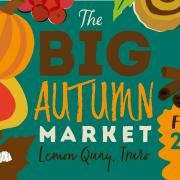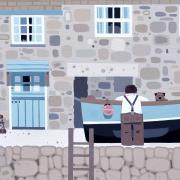The summer wouldn’t be summer without the Royal Cornwall Show, which attracts more than 120,000 to enjoy a great day out Photos by Peter Dean

Close to 4000 creatures, great and small, descend on the Royal Cornwall Show each year to compete for honours. Steven Michell meets the chief vet tasked with keeping them all in top condition.

It’s a unique event, with 120,000 or so people flocking to the three day Royal Cornwall Show each June (this year it takes place on 5, 6 and 7 June). Well preened farm animals, horses and dogs, among others, being one of the main attractions.
Agriculture remains firmly fixed at the show’s heart, 221 years after the then Cornwall Agricultural Society was formed with the sole purpose of promoting excellence and advancement within the industry. The show was developed as the primary vehicle to achieve this objective.
For the last decade veterinary surgeon Ron Fraser has headed up the Cornwall Veterinary Association’s team providing care to the menagerie of animals that assemble for the show.
Livestock has been part of the event virtually from the start, introduced at the second show held at Helston in 1794. Records reveal the prize money for the first show featuring livestock, with five guineas offered for the best stallion and bull and three guineas for the top ram and boar.
Providing veterinary cover for such a large number of animals that gather for the show is a major operation. A unique challenge requires a similar solution, with vets from practices across Cornwall joining forces to undertake the task. Ron modestly emphasises that it’s very much a collaborative effort that ensures the highest standard of care is available for all of the livestock in attendance.
“Chief vet is a bit of a grand title for me, as we work as a team but I took on the lead role when I started. My role is to act as first point of contact during the event.”
As prize schedules for this summer’s show are just about to be published, livestock entries have grown significantly over the past two centuries. In 2014 over 1000 sheep, 200 pigs, 170 goats and more than 1000 horses are expected to congregate at the showground.
A further 500 dairy and beef cattle will join the pursuit of rosettes. Improvements in breeding techniques in the 1840s led to an increase in cattle and sheep breeds and, along with it, entries. This period saw the introduction of many of today’s well-known breeds, such as Devon cattle and Southdown sheep.
Fortunately Ron and his colleagues are very experienced in caring for all of them.
“Our team consists of four vets who are all used to dealing with large farm animals and horses, we look after the show dogs as well,” adds Ron.
If the vet team didn’t have enough livestock to keep them busy, the dog show, first featuring at Royal Cornwall in 1865, attracts a further 750 canine participants.
Despite being a three day show, the veterinary team are on site for five, providing 24 hour cover. Attending to any emergencies with livestock arriving prior to the show opening.
The show vet’s role is wide ranging, including attending main ring events when animals are performing, such as show jumping and the grand parade of livestock and horses. They also measure competing horses and respond to injuries or illnesses arising. Animal welfare is of prime importance. The quantity of livestock involved adds another dimension to keep the vets on their toes. Ron explains.
“The main problem associated with a large number of animals housed together in confined spaces relates to the weather. Excess heat can lead to respiratory disease, as will excess moisture when it’s wet.”
Qualifying as a vet at Glasgow in 1981, Ron was lured from his native Scotland to the opposite end of the UK to begin his career. Firstly at a Newquay based practice before moving to Harleigh Vets at Bodmin shortly after arriving in the Duchy.
“My wife worked at the practice in Newquay and is Cornish, and they don’t tend to leave Cornwall,” says Ron who is still practicing in Bodmin thirty two years later and recently become a director of newly formed large animal practice and new show sponsor, Kernow Farm & Equine.
Fortunately Ron has a passion for farm animals and horses, concluding. “I enjoy the large animal side as I prefer to be out and about. The work can be challenging and hectic but it is nice to get out in the countryside. I’ve not enjoyed this winter though, when will it stop raining?”
Hopefully the sun will be shining in June when Ron and his team fulfil their important role at this year’s Royal Cornwall Show. royalcornwallshow.org



























